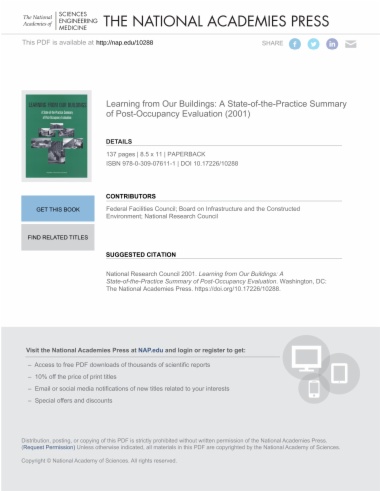

In 1986, the FFC requested that the NRC appoint a committee to examine the field and propose ways by which the POE process could be improved to better serve public and private sector organizations. The resulting report, Post-Occupancy Evaluation Practices in the Building Process: Opportunities for Improvement, proposed a broader view of POEs—from being simply the end phase of a building project to being an integral part of the entire building process. The authoring committee recommended a series of actions related to policy, procedures, and innovative technologies and techniques to achieve that broader view.
In 2000, the FFC funded a second study to look at the state of the practice of POEs and lessons-learned programs among federal agencies and in private, public, and academic organizations both here and abroad. The sponsor agencies specifically wanted to determine whether and how information gathered during POE processes could be used to help inform decisions made in the programming, budgeting, design, construction, and operation phases of facility acquisition in a useful and timely way. To complete this study, the FFC commissioned a set of papers by recognized experts in this field, conducted a survey of selected federal agencies with POE programs, and held a forum at the National Academy of Sciences on March 13, 2001, to address these issues. This report is the result of those efforts.